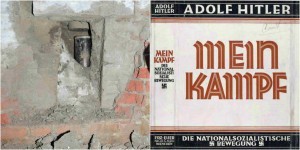In September 2016, after 82 years, a black copper cylinder “time capsule” full of disturbing Nazi artifacts was recovered. It was buried deep in concrete at the Ordensburg Krossinsee Nazi training center.
The time capsule was found in the Polish town of Zlocieniec, formerly known as Falkenburg, which was under control of Nazi Germany until 1945. The training complex survived the war and is currently being used as a barracks by the Polish army.
Although it was always known to have been buried at the Ordensburg Krossinsee facility, the time capsule remained unreachable. Constructed in 1934, it was buried during a formal groundbreaking ceremony. It was lowered more than 20 feet below ground and sealed in a foundation wall of one of the buildings at the training compound.
Its position deep in the building’s foundations has meant that archaeologists were unable to gain access to the time capsule for over eight decades. It remained inaccessible until a recent recovery effort excavated approximately 20 feet below the thick concrete.
To finally extract the capsule, the crews had to wade through standing water while avoiding old land mines planted by the Nazis. They eventually revealed the contents of the container a week after cutting it open with a chainsaw.
Inside, they found an original Nazi badge and two volumes of Hitler’s infamous book Mein Kampf, as well as envelopes filled with coins, photographs, and letters. Additional items from the capsule included newspapers from 1934 and a book documenting 600 years of the town’s history.
Although its contents were of little monetary value, the time capsule still serves as a powerful historical reminder. The capsule’s creators obviously wanted to commemorate and record the founding of this Nazi training center.
(Mein Kampf)
Their descendants would have more likely appreciated the insight into what daily life and popular culture were like during the Third Reich’s rise to power. However, as it turns out, the Nazi regime who created and sealed time this capsule miscalculated their intended future audience.
Dr. Marcin Peterleitner, who led the excavation team, stated that the artifacts were “perfectly preserved” and looked like they had been deposited only yesterday, Mail Online reported.
It is believed the memorabilia were buried on April 22, 1934, when the training complex for the members of the Nazi Party was being constructed. These items now reside in the National Museum in Szczecin, but have yet to be inventoried.
Ask me anything
Explore related questions







